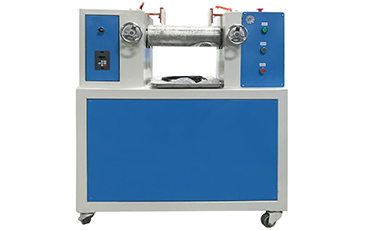The industrial landscape thrives on innovation, and one such innovation that has significantly impacted various sectors is the Mixing Mill Machine. This powerhouse equipment plays a pivotal role in the rubber and plastic industries, transforming raw materials into usable products. In this article, we delve into the inner workings of the Mixing Mill Machine, its applications, and the key factors to ensure optimal performance.
At its core, a Mixing Mill Machine is a two-roll open mill that combines, compounds, and kneads rubber or plastic materials to create uniform blends. The process involves feeding raw materials between two counter-rotating rolls, which exert both compression and shearing forces. This mechanical action breaks down large particles, distributes additives evenly, and creates a homogeneous mixture suitable for further processing.The versatility of Mixing Mill Machines is remarkable, finding application in industries beyond rubber and plastic manufacturing. Sectors such as pharmaceuticals, food processing, and even cosmetics utilize modified versions of this equipment to blend various ingredients effectively. The controlled environment and precision of mixing make it an essential tool for achieving consistent product quality.

Key Factors for Optimal Performance
Material Selection: The choice of raw materials greatly influences the outcome. Ensuring proper material selection and pre-processing enhances the efficiency of the mixing process.
Roll Configuration: The design and gap between the rolls influence the intensity of mixing. Adjusting these parameters allows for customization according to material properties and desired outcomes.
Temperature and Cooling: Controlling the temperature during mixing prevents overheating, which can degrade materials. Efficient cooling systems maintain the desired temperature range.
Additive Incorporation: Efficient distribution of additives demands precise timing. Incorporating additives gradually and at the right stage ensures uniform dispersion.
Safety Measures: Working with Mixing Mill Machines requires adherence to safety protocols. Proper training, protective gear, and emergency stop mechanisms are imperative.
Maintenance: Regular upkeep and maintenance of the machine's mechanical components guarantee longevity and consistent performance.
As industries continue to evolve, so do the technologies that drive them. The Mixing Mill Machine remains a cornerstone in material processing, adapting to emerging demands while upholding its fundamental principles. Innovations in automation, real-time monitoring, and advanced control systems promise to make these machines even more efficient, reducing human intervention and minimizing the margin for error.
In conclusion, the Mixing Mill Machine stands as a testament to the marriage of mechanics and chemistry. Its ability to transform raw materials into homogenous blends with precision and efficiency impacts a multitude of industries. Mastering its operation involves understanding the intricate interplay of materials, mechanics, and process parameters. As technology propels us forward, the Mixing Mill Machine's role as a fundamental industrial workhorse remains unshaken.